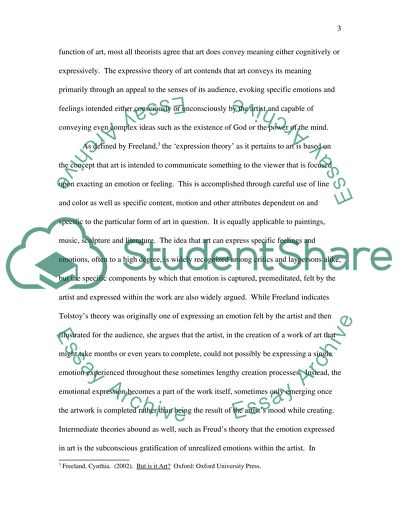Cite this document
(The Expression Theory of Art Essay Example | Topics and Well Written Essays - 2424 words, n.d.)
The Expression Theory of Art Essay Example | Topics and Well Written Essays - 2424 words. Retrieved from https://studentshare.org/philosophy/1539701-discuss-the-expression-theory-of-art-using-the-chapter-from-freelandbut-is-it-art
The Expression Theory of Art Essay Example | Topics and Well Written Essays - 2424 words. Retrieved from https://studentshare.org/philosophy/1539701-discuss-the-expression-theory-of-art-using-the-chapter-from-freelandbut-is-it-art
(The Expression Theory of Art Essay Example | Topics and Well Written Essays - 2424 Words)
The Expression Theory of Art Essay Example | Topics and Well Written Essays - 2424 Words. https://studentshare.org/philosophy/1539701-discuss-the-expression-theory-of-art-using-the-chapter-from-freelandbut-is-it-art.
The Expression Theory of Art Essay Example | Topics and Well Written Essays - 2424 Words. https://studentshare.org/philosophy/1539701-discuss-the-expression-theory-of-art-using-the-chapter-from-freelandbut-is-it-art.
“The Expression Theory of Art Essay Example | Topics and Well Written Essays - 2424 Words”, n.d. https://studentshare.org/philosophy/1539701-discuss-the-expression-theory-of-art-using-the-chapter-from-freelandbut-is-it-art.


